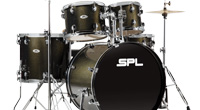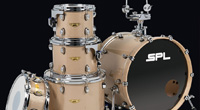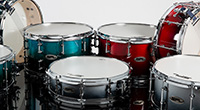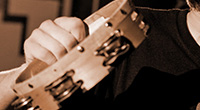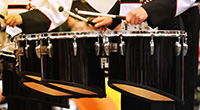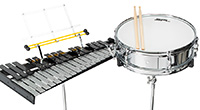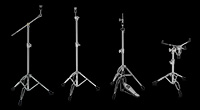Heads
Much like the way guitar strings age, drum heads lose their tone and playability over time and must be replaced. When choosing replacement heads, look not only for your specific sound and tone, but also for the feel and response appropriate to your playing style and musical genre. Generally, the thinner the ply, the brighter and more articulate the sound. The thicker, the more dampened and darker the tone.
Thin heads wear and stretch out quicker than thicker ones, but their softer, more pronounced “give” makes them well suited for players who have a subtle playing technique. Conversely, thicker single-ply and two-play heads have tremendous durability with a very controlled sound. Their quick stick response allows for faster, harder playing and crisper rolls.
The different weight classes break down like this: Extra thin heads (resonant heads), are designed for the non-batter side of snare drums because of their delicate character and maximum sensitivity. Thin heads are a little less sensitive, making them best suited for orchestral use or light playing. Used mainly for toms, mediums are excellent all-around heads, capable of producing a big sound and a full frequency range.
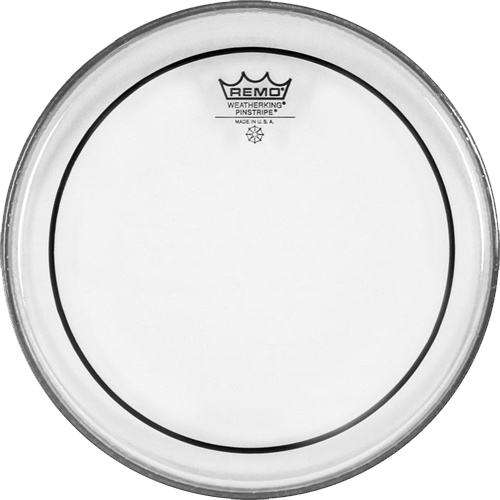
Coated heads, which damped some overtones and provide a darker, warner tone, work well for jazz and studio performance. Dotted heads have an extra layer in the center of the head, producing a more controlled, dampened sound. This quality is ideal for heavier music, like rock.
For heavy rock, metal, fusion and marching applications where aggressive playing is the norm, two-ply heads are a must. These can be tuned very low and still maintain their sound and playability, perfectly complementing the drop tuning vibe of modern rock.


